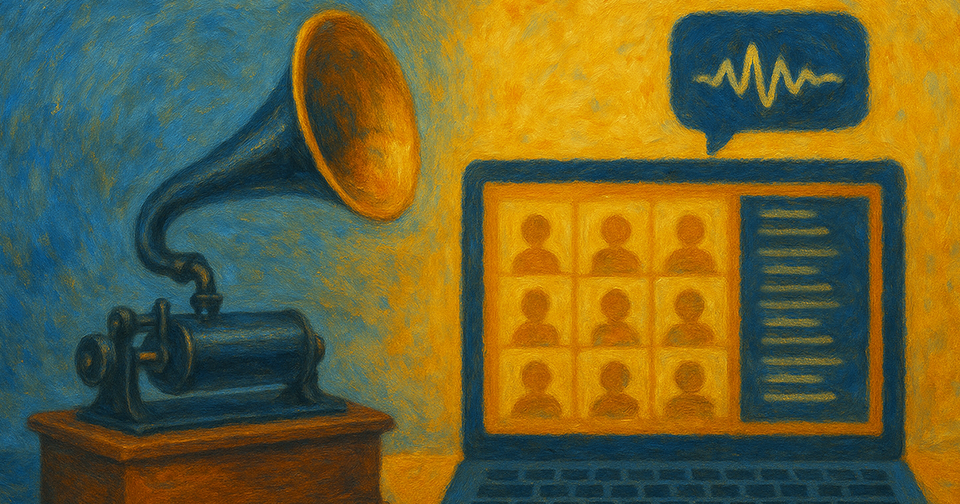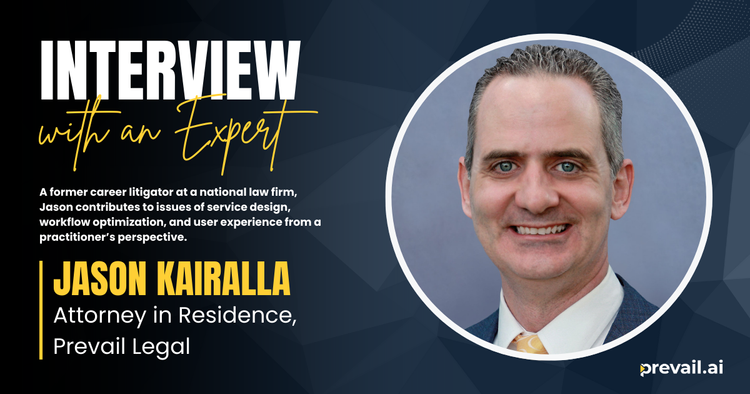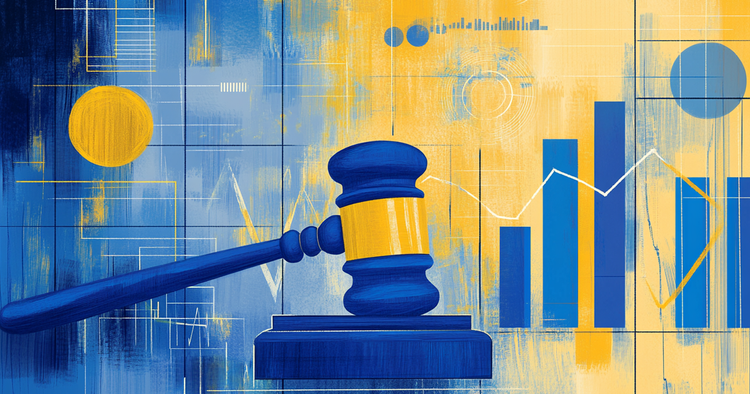Voice Recognition in Legal Tech: A History of Innovation and Impact

When Thomas Edison introduced the phonograph in 1877, he wasn’t aiming to reinvent how the legal world would process information. Yet, more than a century later, his early sound-capturing device has helped lay the groundwork for a technology that’s now reshaping modern legal practice: speech recognition.
Today, AI can transcribe testimony with near-human accuracy and integrate seamlessly into legal workflows. But this didn’t happen overnight. The journey from mechanical dictation to AI-powered transcription spans decades of research, innovation, and quiet breakthroughs—many of which started far outside the courtroom.
This is the story of how voice recognition evolved from novelty to necessity, and what that evolution means for the legal professionals relying on it now.
The Foundation Years: Early Experiments in Machine Listening
Long before voice recognition became a fixture in legal technology, it lived in the imaginations of inventors chasing a deceptively simple question: could a machine understand human speech?
In 1877, Thomas Edison debuted the phonograph—a device designed to record and play back sound using etched grooves on a rotating cylinder. Two years later, he pitched a modified version as a “dictation machine” for office use. It didn’t transcribe anything, of course, but it introduced the radical idea that speech could be captured mechanically—a notion that would echo through the next century of innovation.
By 1952, Bell Labs had built “Audrey,” a system that could recognize spoken digits, one voice at a time. A decade later, IBM introduced Shoebox, which could understand 16 English words.
These early machines were clunky, speaker-dependent, and limited in scope. But they proved a concept that seemed impossible just decades earlier: that machines could do more than hear us—they could start to comprehend.
Government Investment Drives Innovation
In the 1970s, the U.S. government began funding what would become a major turning point in speech recognition history. The Defense Advanced Research Projects Agency (DARPA) launched its Speech Understanding Research (SUR) program, then the most ambitious and well-funded speech recognition effort to date.
With DARPA’s backing, research institutions across the country raced to develop machines that could do more than recognize isolated words. Carnegie Mellon’s team responded with “Harpy,” a system that could recognize over 1,000 words—roughly the vocabulary of a preschooler. That might sound modest, but for machines of the time, it was groundbreaking.
Meanwhile, Bell Labs continued pushing boundaries, exploring how systems could distinguish between multiple speakers—a challenge that still complicates speech recognition today.
The 1970s didn’t deliver fully conversational AI, but they did demonstrate what was possible when serious resources were combined with serious research. The era established a foundation not only for future technological leaps, but for the idea that speech recognition could one day operate at human scale.
The Statistical Revolution
By the 1980s, speech recognition had outgrown its rule-based roots. Researchers began swapping rigid programming for statistical models that could account for the messy, unpredictable nature of real human speech.
At the center of this shift was the Hidden Markov Model (HMM), a mathematical framework that enabled systems to make informed predictions about what a speaker might say next based on probability, rather than relying solely on memorized patterns. Instead of trying to perfectly match every utterance, these models could weigh likely outcomes, dramatically improving recognition accuracy.
The results were immediate and meaningful. Vocabulary limits expanded from hundreds to thousands of words. Systems could now account for variations in speech, accent, and context with more flexibility than ever before.
This era laid the groundwork for nearly every major breakthrough in speech recognition that followed. The move to probabilistic modeling turned speech recognition from a science experiment into a scalable technology—and set the stage for a voice-enabled future.
Personal Computing Democratizes Voice Technology
By the 1990s, speech recognition was no longer a lab experiment—it was showing up on home desktops. Dragon Dictate was one of the first consumer programs to bring voice-to-text capabilities to the masses, offering users a way to speak commands and see words appear on screen without touching a keyboard.
BellSouth also broke new ground during this era, launching its voice-activated phone portal, VAL. For the first time, people could navigate complex phone menus using speech alone—a small taste of the voice interfaces we now take for granted.
Perhaps the biggest leap? Continuous speech recognition. Users no longer had to pause awkwardly. Instead of dictating, word by word, they could speak fluidly, and the software kept up.
Thanks to faster processors and better algorithms, what once required a roomful of computing power could now run on a single personal computer. Speech recognition had officially entered everyday life, and it wasn’t turning back.
The Internet Age and Data Revolution
In the 2000s, voice recognition collided with the power of the internet, and everything changed.
By 2001, speech systems were hitting 80% accuracy, a significant milestone. But it wasn’t just the software getting smarter; it was the data behind it. Companies like Google began mining billions of voice searches, using that sheer volume of data to improve predictive accuracy at a scale no lab ever could.
Google Voice Search, launched in 2008, moved speech recognition into the cloud, allowing devices to offload processing to powerful remote servers. That shift meant even mobile phones could suddenly understand users with a degree of fluency once reserved for supercomputers.
The combination of big data and cloud computing ushered in a new era. Speech recognition stopped being something people actively used and became something that quietly ran in the background—efficient, scalable, and ever-learning.
For the legal world, the groundwork was being laid for tools that could handle complex speech with minimal friction.
The “Smart” Assistant Explosion
By the 2010s, speech recognition had officially gone mainstream. Apple’s release of Siri in 2011 marked a turning point, followed closely by Amazon’s Alexa and Google Home. Suddenly, millions of people were talking to their devices—and expecting them to talk back.
This era didn’t just make voice tech accessible; it normalized it. Asking a smart speaker to schedule a meeting or look up a case citation stopped feeling futuristic. It became routine.
Accuracy also reached a tipping point. In 2017, Google announced its voice recognition system had achieved 95% word accuracy, on par with human transcribers. That kind of performance, once a research goal, was now standard in consumer products.
The legal field had taken notice. As the general public grew more comfortable speaking to machines, legal professionals began searching for voice tools that could meet their industry’s specific demands: precision, security, and speed.
What was once novel had become necessary. And voice tech was just getting started.
Voice Recognition Transforms Legal Practice
Today, voice recognition does much more than simply assist legal professionals. It accelerates their entire workflow. What once required hours of manual effort can now be done in real time, with transcription tools capturing testimony, witness statements, and client conversations as they happen.
This isn’t just about speed. Modern systems, powered by deep learning and neural networks, are tuned to legal language, reducing errors and keeping pace with the nuances of courtroom dialogue. Depositions, hearings, and meetings can be transcribed with near-human accuracy, often within minutes.
Legal teams now rely on speech-to-text drafting tools for memos, motions, and even case notes. Integrated AI systems can flag key terms, summarize content, or sync transcripts directly with case management software—no extra clicks required.
The impact is both practical and profound: faster turnaround times, improved documentation, and more accessible legal services. For a profession rooted in language, the ability to capture and process speech with this level of fidelity is more than a tech upgrade. It represents a fundamental shift in how legal work is done.




